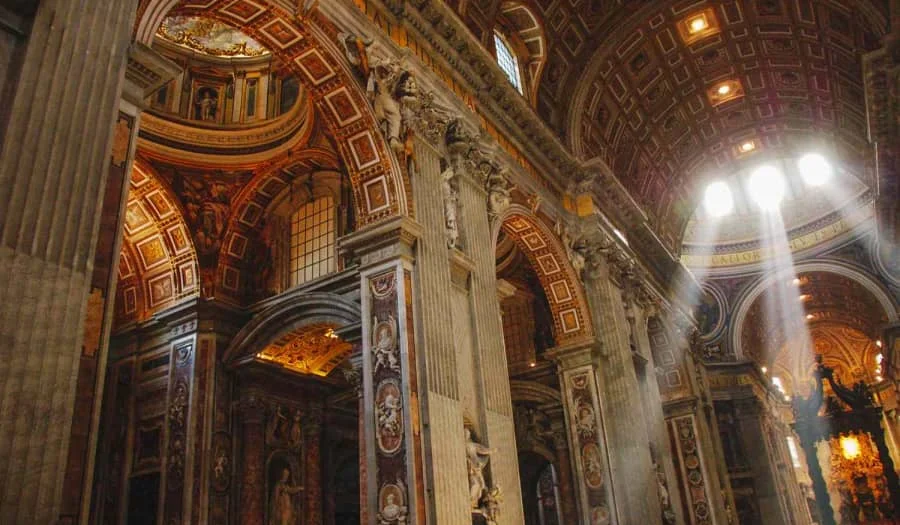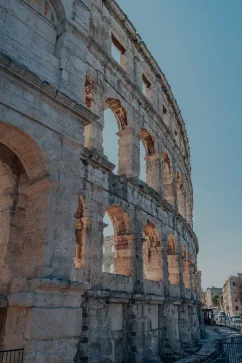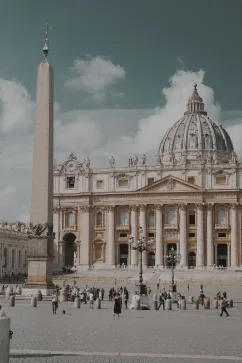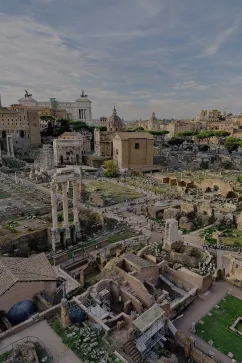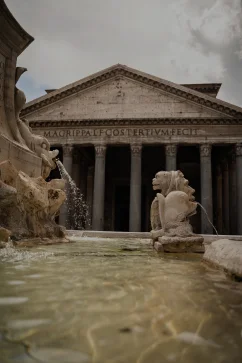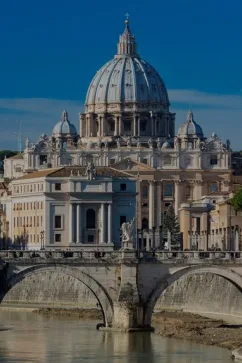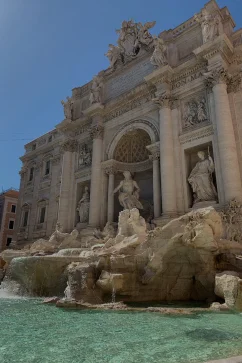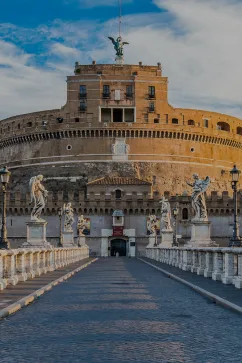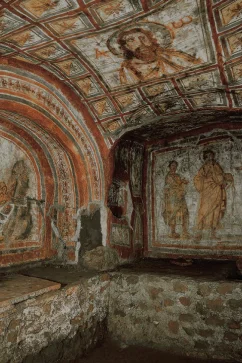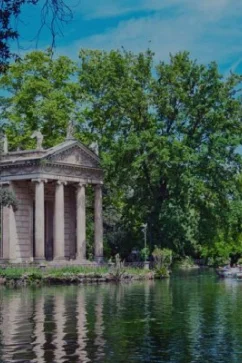St. Peter’s Basilica
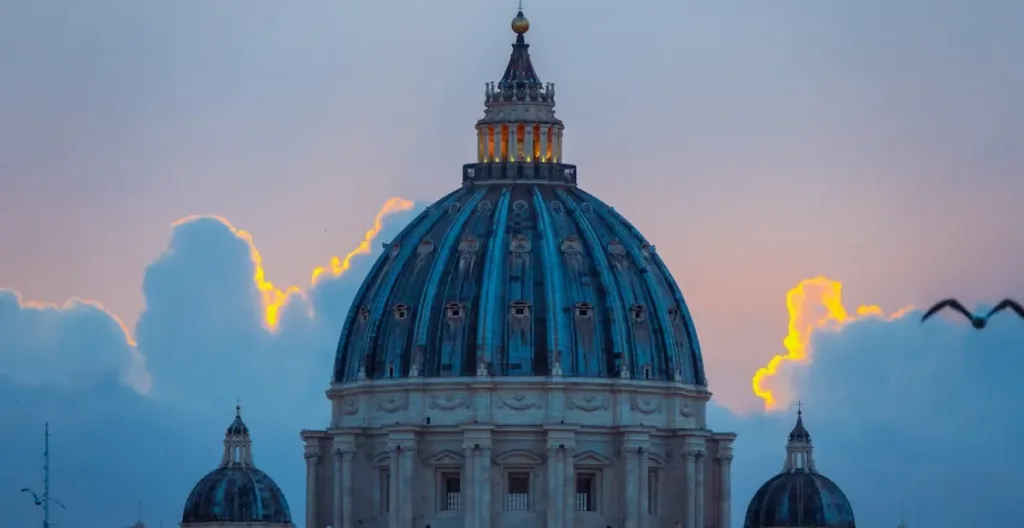
About St. Peter’s Basilica
The architectural and spiritual masterpiece, the St. Peter’s Cathedral stands high as the jewel in the crown of Vatican City. It is often referred to interchangeably as St. Peter’s Basilica and is among the most iconic churches in the world. Overlooking the grand St. Peter’s Square, the basilica’s dome, designed by Michelangelo, reigns as an iconic symbol of faith. Its sheer size and grandeur encapsulate centuries of history and devotion.
Visitors are enthralled as soon as they step inside St. Peter’s Basilica by the basilica’s architectural wonders, which draw inspiration from the Renaissance and Baroque styles. The breathtaking interior is decorated with intricate mosaics, golden altars, and sculptures, including Michelangelo’s poignant “Pieta” and the colossal statue of St. Peter himself.
St. Peter’s Basilica tours provide an opportunity to delve deeper into its rich history, including a glimpse of St. Peter’s tomb and the sacred Pope tombs beneath. Ascending the basilica’s dome rewards travelers with panoramic views of Rome, an experience that’s nothing short of breathtaking.
With a height of 136 meters and a capacity for thousands of worshipers, the St. Peter’s Basilica dome stands as a testament to both human ingenuity and spiritual devotion. Whether you’re exploring its architectural wonders, gazing at the statues, or reflecting at the heart of St. Peter’s tomb, this magnificent basilica offers an unparalleled journey through art, history, and faith.
History of St. Peter’s Basilica
St. Peter’s Basilica’s history dates back to the 4th century when the old St. Peter’s Basilica was constructed on the burial site of Saint Peter, one of the twelve apostles of Jesus and the first pope. However, by the early 16th century, the old St. Peter’s Basilica was in a state of disrepair, and Pope Julius II commissioned a new grand basilica to be built.
The construction of the present-day St. Peter’s Basilica, designed by renowned architects like Bramante, Michelangelo, and Bernini, spanned over a century. The building was formally opened in 1626 and is still one of the best examples of Renaissance and Baroque styles today. The St. Peter’s Basilica dome, designed by Michelangelo, for the church is still an iconic symbol of both aesthetic and religious excellence. Many significant historical occasions, like as papal coronations and significant religious gatherings, have taken place at St. Peter’s.
Over the centuries, St. Peter’s Basilica has been a site of pilgrimage, worship, and cultural significance, attracting millions of visitors from around the world. Its history is intertwined with the history of the Catholic Church and the city of Rome, making it a remarkable testament to faith, artistry, and human achievement.
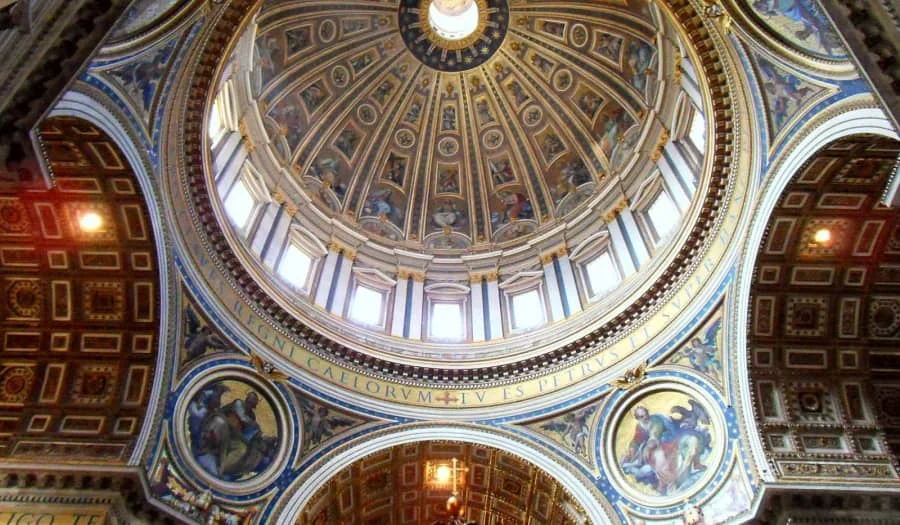
Tips for your visit
- St Peter’s Basilica Hours: Try to visit early in the morning or late in the afternoon to avoid crowds. Check the St Peter’s Basilica hours, before visiting.
- St Peter’s Basilica Tickets: While entrance to the basilica itself is generally free, there might be a fee to access certain areas or take guided tours. Be prepared for this.
- Guided Tours: Consider a guided tour to learn about the history, art, and significance of the basilica.
- Papal Tombs: Explore the papal tombs beneath the basilica, including that of St. Peter. It’s a significant historical and religious site.
- St. Peter’s Square: Start by admiring the grandeur of St. Peter’s Square, designed by Bernini. It’s a perfect spot for photos and taking in the surroundings.
- Dress Code: Ensure you’re dressed appropriately, covering shoulders and knees as a sign of respect when entering the basilica.
- St. Peter’s Basilica Dome: If you’re up for it, consider climbing to the top of the dome for stunning panoramic views of Rome. Be prepared for some stairs, or you can take an elevator partway.
- Architectural Marvel: Take time to appreciate the basilica’s awe-inspiring architecture, designed by luminaries like Bramante, Michelangelo, and Bernini.
- St. Peter’s Statue: Don’t miss the iconic statue of St. Peter, where visitors traditionally touch or kiss his foot for blessings.
- Pope Tombs: Pay your respects at the papal tombs, where several popes are laid to rest.
Tickets
St. Peter’s Basilica, as a religious site, does not typically require an admission ticket for entry. Visitors can enter the basilica free of charge. However, there are certain areas within the basilica that may require tickets, such as climbing the dome or visiting the Vatican Grottoes and the papal tombs. For enriched experiences, opt for guided tours at €15 (€10 reduced) or audio guides at €5 (€3 reduced) available in various languages. Plan your visit today and immerse yourself in the beauty and history of St. Peter’s Basilica.
How to arrive
Arriving at St. Peter’s Basilica is straightforward due to its central location in Vatican City. Here are various transportation options:
By Metro: Take Line A (the red line) and get off at the “Ottaviano – San Pietro – Musei Vaticani” station. From there, it’s a short walk to St. Peter’s Basilica.
By Bus: Several bus lines serve the area near St. Peter’s Basilica. Use Bus 40 or Bus 64, stopping at Traspontina/Conciliazione or Cavalleggeri/S. Pietro. Buses 32, 81, 982, 492, and 990 also serve the area.
By Train: You can take a train from Roma Termini, RE 12524, REG 12514 (to Civitavecchia), or RE 4134 (to Pisa Centrale) to St. Pietro station.
By Tram: Tram Line 19 is another option. Take Tram 19 from V.Le Regina Margherita/Morgagni, and alight at Piazza del Risorgimento. It’s just a 6-minute walk to the basilica.
By Car: To reach St. Peter’s Basilica by car, take the fastest route via Corso Vittorio Emanuele II from Rome. Note that private cars cannot enter Vatican City; parking is required nearby.
